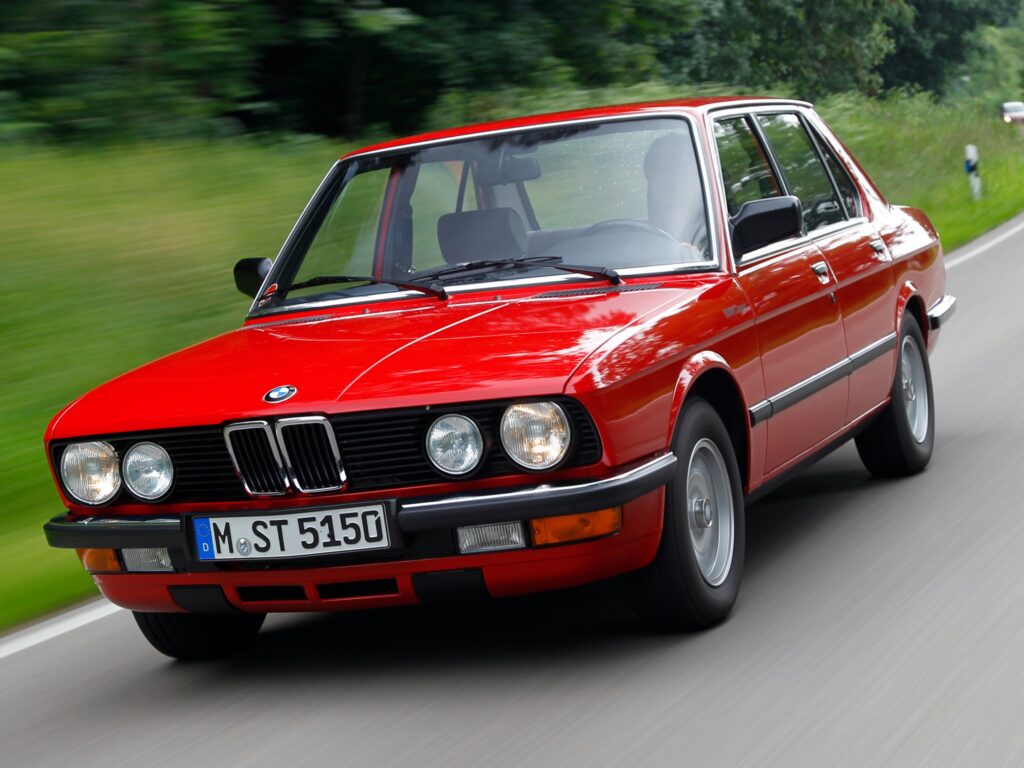
The BMW E28, produced from 1981 to 1988, holds a special place in the annals of automotive history. As the second generation of BMW’s esteemed 5 Series mid-size sedans, it followed in the footsteps of its successful predecessor, the E12, while introducing an array of new design elements, technological advancements, and performance attributes that would set a precedent for future BMW models, and arguably, the automotive industry as a whole.
Inheriting the E12’s lineage, the E28 featured an evolutionary design approach that maintained the core identity of BMW aesthetics while integrating modern, aerodynamic elements. The contours were smoother, the lines more streamlined, and the overall shape more aerodynamically optimized, with the addition of flush fitting glass – features that were informed by the development of the luxurious E23 7 Series.
Design Evolution
In terms of design, the E28 represented an evolutionary approach rather than a radical departure from the previous model. The car retained a distinctive BMW look, particularly with the ‘twin-kidney’ grille and the quad round headlights, hallmarks of BMW’s design identity. However, a more streamlined body shape and the integration of bumpers into the car’s body were significant steps forward that not only reduced wind resistance but also gave the car a modern and cohesive look.
A key design characteristic was the car’s ‘driver-focused’ interior. This was reflected in the angled center console, a design touch that would become a staple of BMW interiors for many years. The interior of the E28 was also roomier and more comfortable than that of the E12, reflecting BMW’s focus on creating a vehicle that was not only fun to drive but also comfortable for long journeys.
Technological Innovations
The E28 was ahead of its time in terms of technology. It featured power steering as standard across all models, something that wasn’t common at the time. Anti-lock brakes (ABS), a relatively new technology, were also offered, making the E28 one of the first cars to have this feature.
Another significant technological advancement was the “check control” system. This was an early vehicle diagnostic system that could alert the driver to a range of potential issues, such as low fluid levels or a blown bulb. The system could display messages in several languages, a feature that underscored the car’s international appeal.
Performance and Driving Experience
BMW has always been known for creating driver-focused cars, and the E28 was no exception. The car’s rear-wheel-drive layout and well-tuned suspension made it a joy to drive, and the range of engines offered meant that there was an E28 for everyone, from the economical four-cylinder 518 and 518i to the six-cylinder 533i and the high-performance M5.
The M5, in particular, was a revelation. Powered by a 3.5-liter engine derived from the M1 supercar, it was capable of reaching speeds of over 150 mph, making it the fastest production sedan in the world at the time. The M5 was hand-built at BMW Motorsport in Garching, Germany, and it was offered in relatively limited quantities, which has contributed to its desirability among collectors today.
Impact and Legacy
The E28’s impact on the automotive industry and on BMW itself cannot be overstated. It successfully combined performance, comfort, and technology in a way that few cars of its time could match. The car set a new standard for what a mid-size luxury sedan could be, and it laid the groundwork for the success of the 5 Series in the years to come.
In addition, the E28 was the birthplace of the BMW M5, a car that would become a legend in its own right. The M5 redefined what a performance sedan could be, offering supercar-rivaling performance in a practical and luxurious package. This concept would be further refined in future M5 models and would inspire a whole segment of high-performance sedans.
In today’s market, the E28, especially the M5, is considered a classic. It is highly sought after by BMW enthusiasts and classic car collectors, appreciated not only for its design and driving dynamics but also for its historical significance as the forefather of the modern performance sedan.
